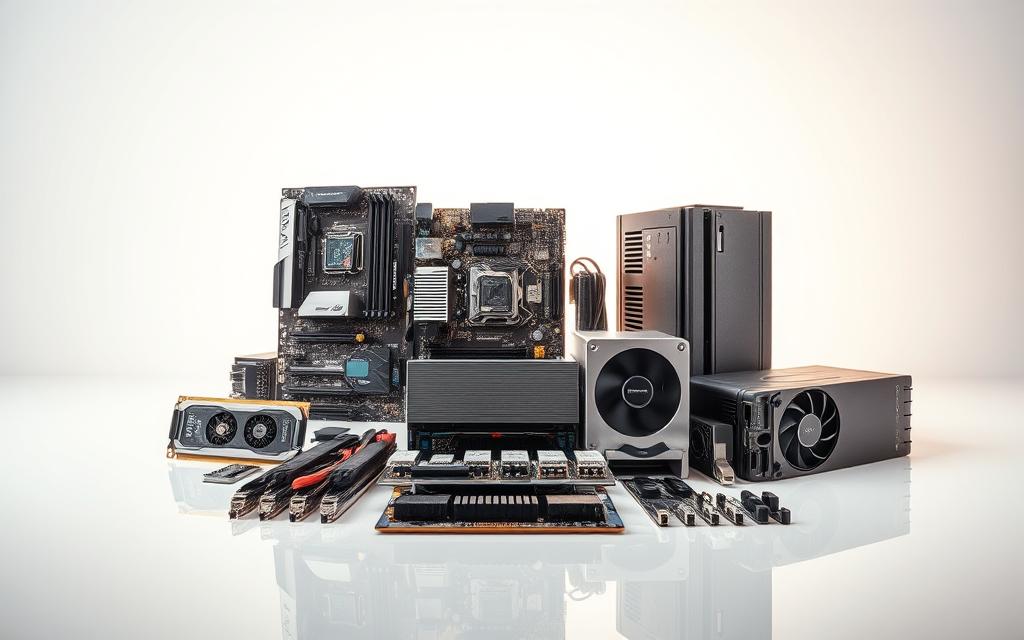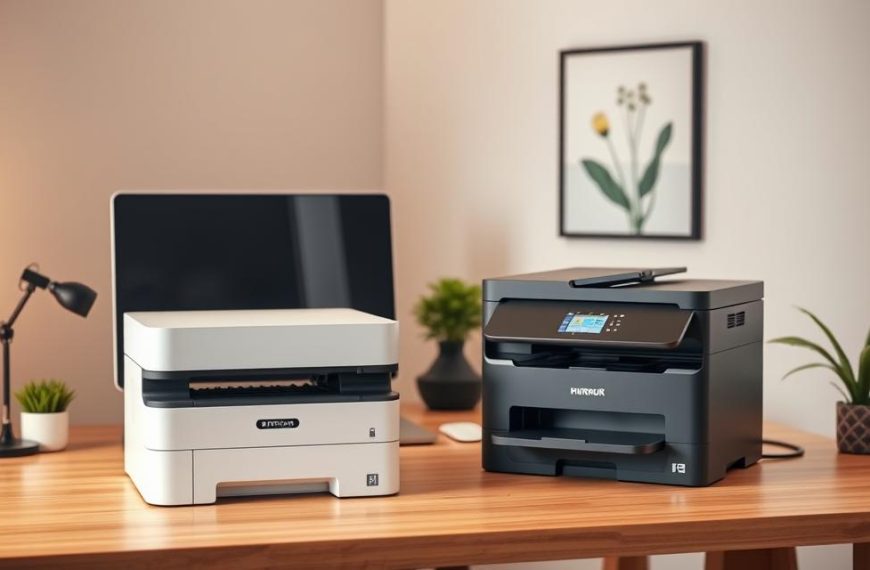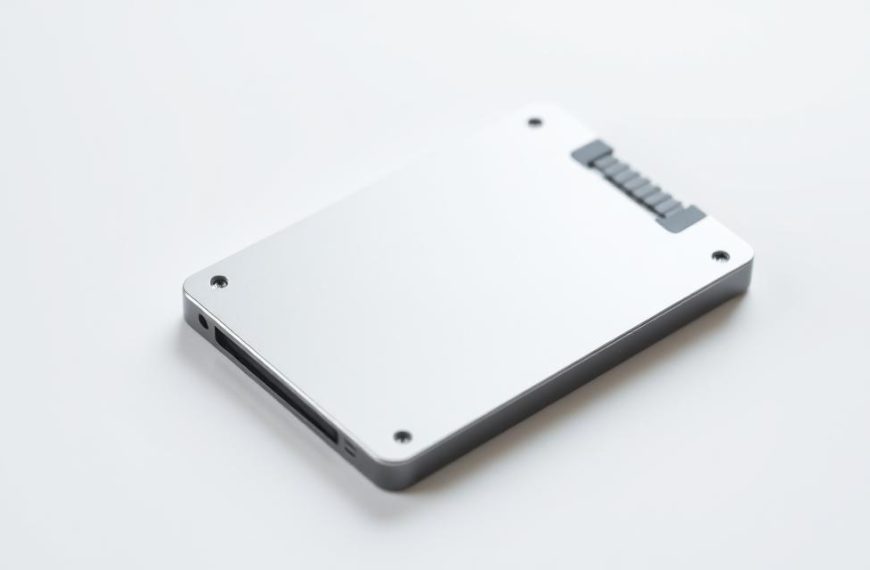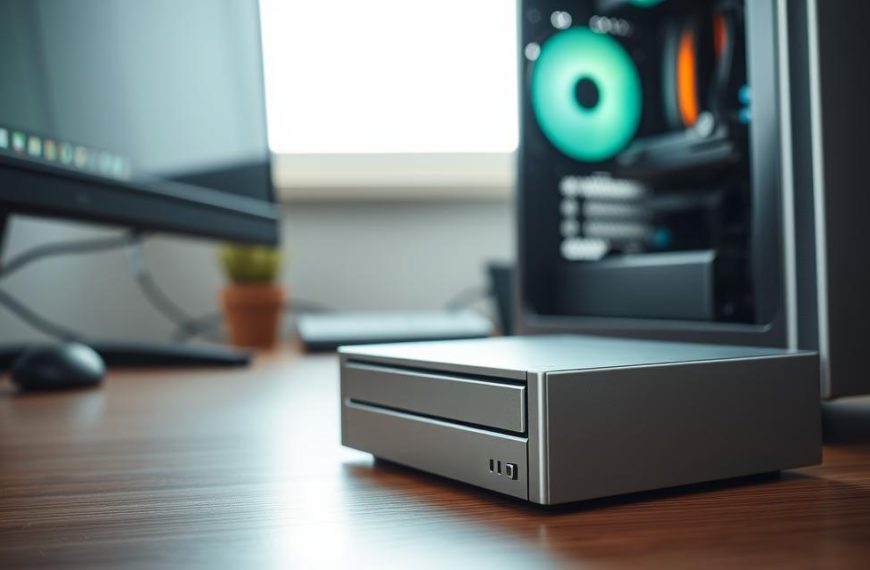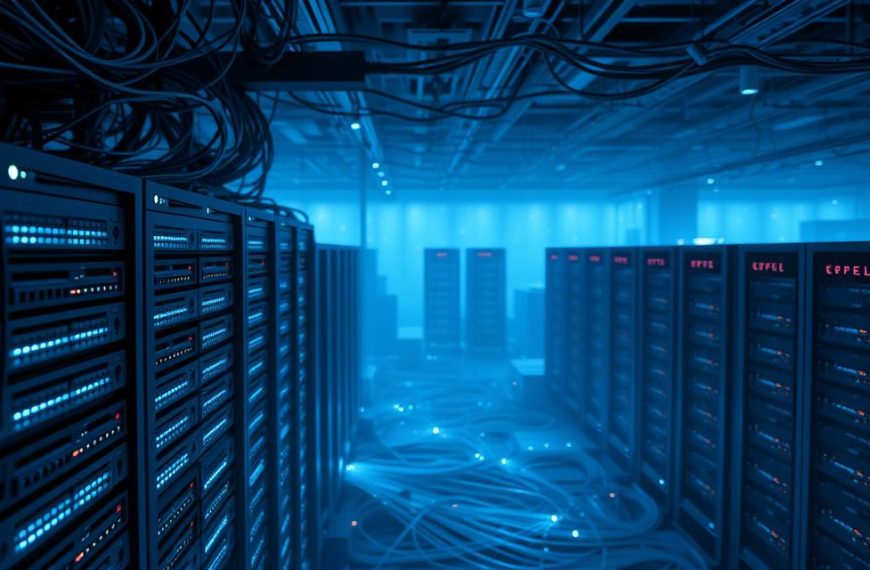Understanding the inner workings of a computer is essential for troubleshooting and upgrades. Just like humans need healthcare for longevity, PCs require regular maintenance to perform at their best. Knowing the role of each component can save time, money, and frustration.
Take the HP Pavilion 27-ca1006d All-in-One PC as an example. It features a 12th Gen Intel i7 processing unit and NVIDIA RTX 3050, showcasing how optimized hardware configurations deliver top performance. Such devices highlight the importance of balancing power and efficiency.
Memory systems also play a critical role. Storage devices retain data permanently, while RAM offers temporary storage. Recognizing the difference helps users make informed decisions about upgrades or repairs. For more tips, resources like HP Tech Takes can guide you in maintaining your system effectively.
Introduction to Computer Hardware
Computer hardware forms the foundation of every computing device. These tangible parts include everything from processors to storage drives. Unlike software, which consists of instructions, hardware is the physical framework that enables a system to function.
The evolution of computer hardware spans centuries. From Leibniz’s 17th-century mechanical calculator to today’s integrated circuits, advancements have been remarkable. Early devices like Pascal’s gear-based adder paved the way for modern multi-core processors.
Modern components face unique challenges, such as heat management in high-performance chips. The shift toward parallel processing architectures has revolutionized computing. Devices like the HP Workstation Z4 G4 Tower showcase upgradable parts, offering flexibility for users.
Economic factors also play a role in hardware manufacturing. Balancing cost and performance is crucial for both producers and consumers. Understanding these dynamics helps users make informed decisions about their computers.
What Are the Major Hardware Components of a Computer?
At the heart of every computing device are six essential elements. These include the motherboard, CPU, GPU, RAM, storage, and PSU. Each plays a unique role in ensuring smooth operation.
The motherboard acts as the central hub, connecting all other parts. The CPU handles processing tasks, while the GPU manages graphics. RAM provides temporary storage for active tasks, and storage devices retain data long-term. The PSU supplies power to the entire system.
These parts work together seamlessly. For example, the CPU and GPU collaborate to render complex visuals in games or applications. This interdependence ensures optimal performance.
Upgrading these elements varies between laptops and desktops. Desktops often feature modular parts, making upgrades easier. Laptops, however, may have soldered components, limiting flexibility.
| Component | Function |
|---|---|
| Motherboard | Connects all parts |
| CPU | Processes instructions |
| GPU | Handles graphics |
| RAM | Stores active data |
| Storage | Retains long-term data |
| PSU | Supplies power |
HP’s All-in-One PC exemplifies space-efficient design. It integrates all parts into a compact form, balancing performance and convenience. This approach is ideal for users with limited space.
Performance bottlenecks often arise in pre-built systems. Custom builds allow users to optimize each part for specific needs. Understanding these differences helps in making informed decisions.
Hardware tiers, such as consumer, workstation, and gaming, cater to diverse needs. Gaming systems, like the HP Omen 45L with AMD Ryzen 7 and RTX 3080, prioritize high performance. Workstations focus on reliability for professional tasks.
1. The Motherboard: The Backbone of Your Computer
Every computer relies on a motherboard to connect its essential parts. This circuit board acts as the central hub, linking the CPU, RAM, storage, and other components. Without it, the system cannot function as a cohesive unit.
What is a Motherboard?
A motherboard is a multi-layered printed circuit board designed to route electrical signals efficiently. It contains RAM slots, controllers, and system chipsets. These elements ensure smooth communication between components.
Signal integrity is maintained through precise trace routing. This prevents interference and ensures reliable performance. The hardware layout is critical for both speed and stability.
Types of Motherboards
Motherboards come in various form factors, such as ATX, microATX, and mini-ITX. Each size determines compatibility with cases and other components. For example, ATX boards offer more expansion slots, while mini-ITX is ideal for compact builds.
Laptops use specialized designs with soldered parts. This saves space but limits upgrade options. Devices like the HP Pavilion AiO feature hidden motherboards, blending aesthetics with functionality.
Chipsets play a vital role in managing I/O operations and bus speeds. They ensure efficient data transfer between the CPU and peripherals. BIOS/UEFI firmware handles the boot sequence, initializing the system during startup.
Enterprise-grade boards often meet higher durability standards. Consumer models, while cost-effective, may lack robust construction. Common failure points include capacitor issues and trace corrosion, which can disrupt performance.
2. Central Processing Unit (CPU): The Brain of the Computer
The central processing unit drives every operation in a computer. It executes instructions, performs calculations, and manages data flow. From opening applications to rendering graphics, the CPU ensures smooth performance.
How the CPU Works
The CPU follows the fetch-decode-execute cycle. First, it fetches instructions from memory. Next, it decodes these instructions into commands. Finally, it executes them using its arithmetic logic unit (ALU). This process happens billions of times per second.
Modern CPUs use instruction pipelining to enhance efficiency. This technique allows multiple instructions to be processed simultaneously. Cache hierarchy, including L1, L2, and L3 caches, reduces latency by storing frequently accessed data.
Multi-Core Processors
Multi-core processors, like the Intel Core i7-12850HX with 16 cores, handle multiple tasks at once. Each core operates independently, improving overall performance. Hyperthreading further boosts efficiency by allowing each core to manage two threads simultaneously.
Architectures like x86 and ARM cater to different needs. x86 excels in high-performance computing, while ARM focuses on energy efficiency. HP devices leverage both architectures to balance power and battery life.
| Feature | Description |
|---|---|
| Instruction Pipelining | Processes multiple instructions simultaneously |
| Cache Hierarchy | Reduces latency with L1, L2, and L3 caches |
| Hyperthreading | Allows each core to handle two threads |
| Multi-Core Design | Improves multitasking and performance |
Overclocking can push a CPU beyond its default speed. However, it increases heat output and risks thermal throttling. Proper cooling, whether air or liquid, is essential for stability.
Tools like CPU-Z provide real-time monitoring of clock speeds, temperatures, and voltages. This helps users optimize their systems and avoid potential issues.
TSMC’s 5nm manufacturing process has revolutionized modern CPUs. It enhances efficiency and reduces power consumption. Devices like the HP Workstation Z4 G4 Tower benefit from advanced processors like Intel Xeon, offering reliability for professional tasks.
Graphical Processing Unit (GPU): Handling Graphics and Visual Data
Modern computing relies heavily on visual data processing. Whether gaming, editing videos, or running simulations, the GPU ensures smooth and efficient rendering. This component is designed to handle complex calculations for graphics and video, making it indispensable for high-performance tasks.
Role of the GPU
The GPU specializes in parallel processing, allowing it to manage multiple tasks simultaneously. Unlike the CPU, which focuses on sequential operations, the GPU excels at rendering textures, lighting, and shadows in real-time. This capability is crucial for applications like 3D modeling and video editing.
Technologies like NVIDIA’s ray tracing and DLSS enhance visual fidelity. Ray tracing simulates realistic lighting effects, while DLSS uses AI to upscale lower-resolution images. These advancements push the boundaries of graphics quality, especially in gaming.
Integrated vs. Dedicated GPUs
Integrated GPUs are built into the CPU, offering power efficiency for everyday tasks. They are ideal for laptops and budget systems. Dedicated GPUs, like the NVIDIA RTX 3050, provide superior performance for demanding applications. They feature their own VRAM, ensuring faster data access for texture rendering.
Multi-GPU configurations, such as SLI or Crossfire, combine multiple cards for even greater power. However, these setups require compatible hardware and software support. Devices like the HP Omen 45L with RTX 3080 showcase the potential of dedicated GPUs in 4K gaming.
| Feature | Integrated GPU | Dedicated GPU |
|---|---|---|
| Performance | Moderate | High |
| Power Efficiency | Excellent | Moderate |
| VRAM | Shared | Dedicated |
| Use Case | Everyday tasks | Gaming, professional apps |
GPU-accelerated computing is transforming industries. Applications like Blender and Adobe Premiere Pro leverage the GPU for faster rendering and editing. This trend highlights the growing importance of processing power in creative workflows.
Display standards like HDMI 2.1 and DisplayPort 1.4a ensure compatibility with high-resolution monitors. These technologies support higher refresh rates and resolutions, enhancing the user experience. Understanding these standards helps in choosing the right components for your system.
Random Access Memory (RAM): Temporary Data Storage
Efficient computing relies on quick access to data. Random access memory (RAM) ensures active tasks run smoothly by providing temporary storage. Unlike permanent storage, RAM allows rapid read and write operations, boosting system performance.
Understanding RAM
RAM stores data and instructions needed by the CPU for active processes. When you open an application, it loads into RAM for faster access. This temporary storage is volatile, meaning it clears when the system powers off.
Modern systems use DDR4 or DDR5 RAM. DDR5 offers higher bandwidth and lower power consumption compared to DDR4. For example, DDR5 can reach speeds of 6400 MT/s, while DDR4 maxes out at 3200 MT/s. This makes DDR5 ideal for demanding tasks like gaming or video editing.
Types of RAM
RAM comes in various forms, including non-ECC and ECC memory. Non-ECC is common in consumer systems, while ECC includes error correction for critical applications. HP systems often feature upgradeable RAM slots, allowing users to increase capacity as needed.
Dual-channel and quad-channel configurations enhance performance by increasing data transfer rates. For instance, dual-channel setups double the bandwidth compared to single-channel. Quad-channel configurations are typically found in high-end workstations.
| Feature | DDR4 | DDR5 |
|---|---|---|
| Speed | Up to 3200 MT/s | Up to 6400 MT/s |
| Power Efficiency | Moderate | High |
| Error Correction | Non-ECC | Optional ECC |
Overclocking RAM using XMP profiles can push performance beyond factory settings. However, this requires compatible motherboards and proper cooling. RAM disk utilities create temporary workspaces for faster access to frequently used files.
Installing DIMMs involves aligning notches and applying even pressure. HP BIOS memory compatibility lists ensure seamless integration. Detecting memory leaks, which cause gradual slowdowns, is crucial for maintaining system efficiency.
5. Storage Devices: Long-Term Data Storage
Reliable data storage is crucial for maintaining system efficiency and protecting valuable information. Whether for personal use or enterprise solutions, choosing the right storage devices ensures smooth operations and data security.
Hard Disk Drives (HDDs) vs. Solid-State Drives (SSDs)
HDDs and SSDs are the two primary types of storage drives. HDDs use spinning platters and magnetic heads to read and write data. They offer higher capacity at a lower cost, making them ideal for bulk storage. For example, a 7200RPM HDD provides a balance of speed and affordability.
SSDs, on the other hand, use NAND flash memory for faster access times. They are more durable and energy-efficient, with technologies like QLC and TLC NAND flash enhancing performance. M.2 NVMe SSDs, such as those in HP’s 1TB configurations, deliver speeds up to 3500 MB/s, far surpassing SATA III’s 600 MB/s limit.
Features like the TRIM command and garbage collection optimize SSD longevity. HP Sure Start firmware adds an extra layer of protection, ensuring data integrity even during power fluctuations.
External Storage Options
External storage devices provide flexibility for backup and portability. USB4 and Thunderbolt 4 drives offer high-speed data transfer, with Thunderbolt 4 reaching up to 40 Gbps. These options are perfect for professionals needing quick access to large files.
Network-attached storage (NAS) solutions are ideal for enterprise environments. They support RAID arrays for data redundancy, ensuring minimal downtime in case of drive failure. S.M.A.R.T. monitoring tools help detect potential issues early, preventing data loss.
| Feature | HDD | SSD |
|---|---|---|
| Speed | Moderate | High |
| Durability | Lower | Higher |
| Energy Efficiency | Moderate | High |
| Cost per GB | Lower | Higher |
SSD endurance, measured in terabytes written (TBW), varies by model. High-end SSDs can handle up to 600 TBW, making them suitable for intensive workloads. Understanding these metrics helps users choose the right drive for their needs.
6. Power Supply Unit (PSU): Providing Energy to Your Computer
A stable power supply is vital for any computing device. It ensures consistent energy delivery to all components, enabling smooth operation. Without a reliable power source, even the most advanced hardware cannot function effectively.
Importance of the PSU
The power supply unit converts AC power from the outlet into DC power for the system. It regulates voltage levels to prevent damage to sensitive components. Rail voltage stability is crucial, as fluctuations can lead to crashes or hardware failure.
Capacitor aging can reduce efficiency over time. High-quality capacitors ensure long-term reliability. Power spike protection mechanisms safeguard against sudden surges, which can harm the system.
GPU transient power spikes, common in gaming setups, require a PSU with sufficient headroom. Devices like the HP Omen 45L often feature PSUs designed to handle these demands.
Choosing the Right PSU
Selecting the appropriate power supply depends on your system’s needs. HP desktop PSU wattage recommendations provide a starting point. Use a PSU calculator to determine the ideal capacity based on your components.
80 Plus certification tiers, from Bronze to Titanium, indicate energy efficiency. Higher tiers reduce energy waste and lower operating costs. Modular designs offer better cable management, improving airflow and aesthetics.
Single-rail designs simplify power distribution, while multi-rail setups enhance safety by isolating circuits. Uninterruptible power supply (UPS) integration ensures continued operation during outages.
| Feature | Single-Rail | Multi-Rail |
|---|---|---|
| Power Distribution | Simplified | Isolated |
| Safety | Moderate | High |
| Complexity | Low | High |
Investing in a high-quality power supply ensures long-term reliability and optimal system performance. Whether for gaming, workstations, or everyday use, the right PSU is essential.
Conclusion: Understanding Your Computer’s Hardware
Keeping your system running smoothly requires understanding its core elements. Each part, from the CPU to storage, plays a vital role in overall performance. Recognizing their interdependence helps in troubleshooting and upgrades.
Regular maintenance extends the lifespan of your components, which typically last 3-5 years. Tools like HP Support Assistant monitor hardware health, ensuring optimal operation. Replacing thermal paste and cleaning dust buildup are simple yet effective practices.
Upgrades should consider warranty terms to avoid voiding coverage. Signs of failure, like frequent crashes or overheating, indicate the need for replacements. HP’s component services offer reliable solutions for seamless upgrades.
By managing your computer’s lifecycle effectively, you can maintain peak performance and avoid costly repairs. Stay proactive with regular checks and leverage HP’s diagnostic tools for long-term reliability.

